

This paper proposes a programmable logic element (PLE) based on Sense-Switch type pFLASH technology. By programming the Sense-Switch type pFLASH, all three-input lookup table (LUT3) functions, some LUT4 functions, latch functions, and D flip-flop (DFF) functions with enable and reset capabilities are realized. Because the PLE uses a method called Combinational Operation Logic (COOL) to compute logic functions, it allows for the implementation of any logic circuit using arbitrary combinations of logic and registers. This intrinsic characteristic brings it close to basic ASIC units in terms of fine granularity, thereby allowing ASIC-like cell-based mappers to apply all their optimization potential. Measured results of the Sense-Switch type pFLASH and PLE circuits show that the “on-state” driving current of the Sense-Switch type pFLASH is approximately 245.52 μA, and the “off-state” leakage current is about 0.1 pA; the programmable functions of the PLE are working properly; the typical delay of the combinational logic operation AND3 is 0.69 ns, and the delay of the sequential logic DFF is 0.65 ns, both meeting the design technical specifications.
Field Programmable Gate Array; Programmable Logic Element; Boolean Logic Operation; Lookup Table; Sense-Switch type pFLASH; Threshold Voltage
|
Zhengzhou CAO, Guozhu LIU, Yanfei ZHANG, Yuer SHAN, Yuting XU
No. 58 Research Institute of China Electronics Technology Group Corporation, Wuxi, Jiangsu, 214035, China
Zhengzhou CAO, Guozhu LIU, Yanfei ZHANG, et al., 2024. Design and verification of an FPGA programmable logic element based on Sense-Switch pFLASH. Frontiers of Information Technology & Electronic Engineering, 25(4):485-499.
https://doi.org/10.1631/FITEE.2300454
|
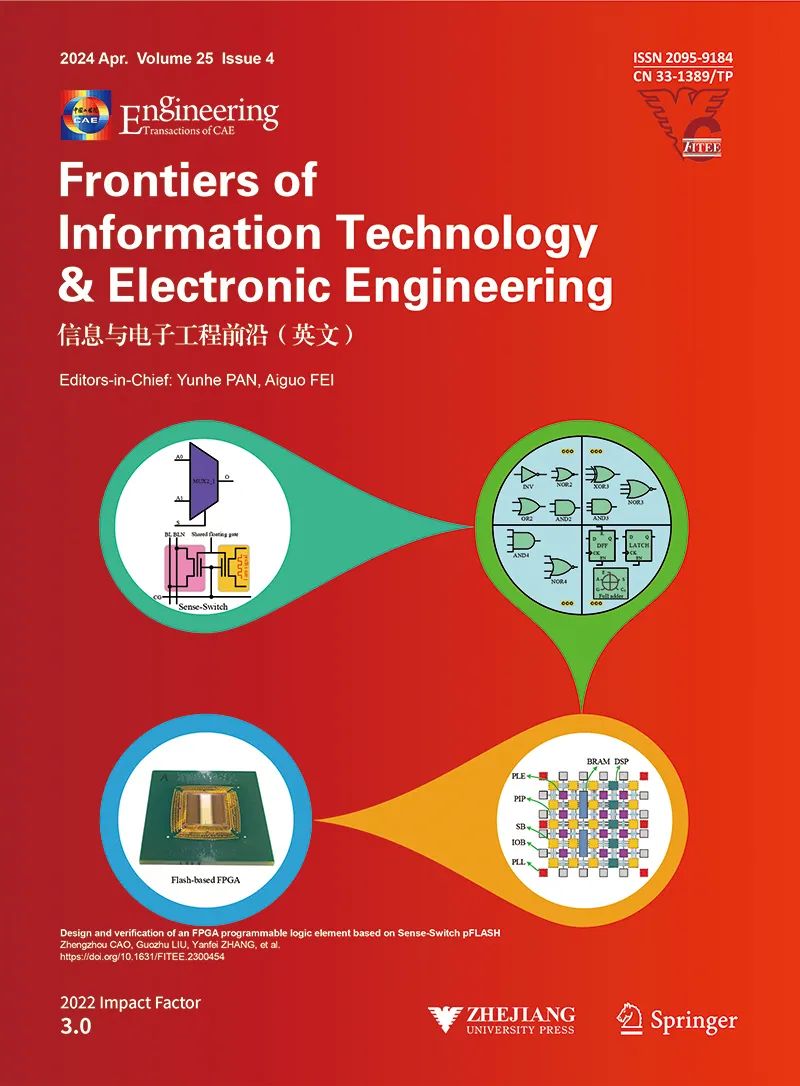
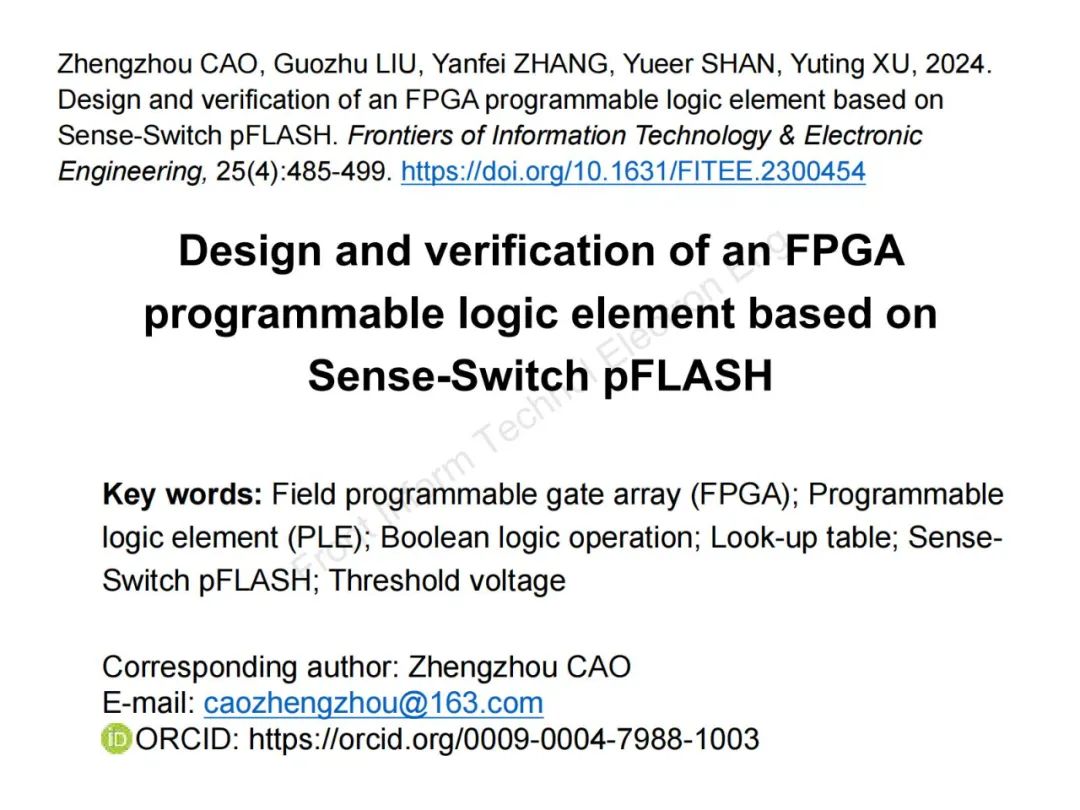


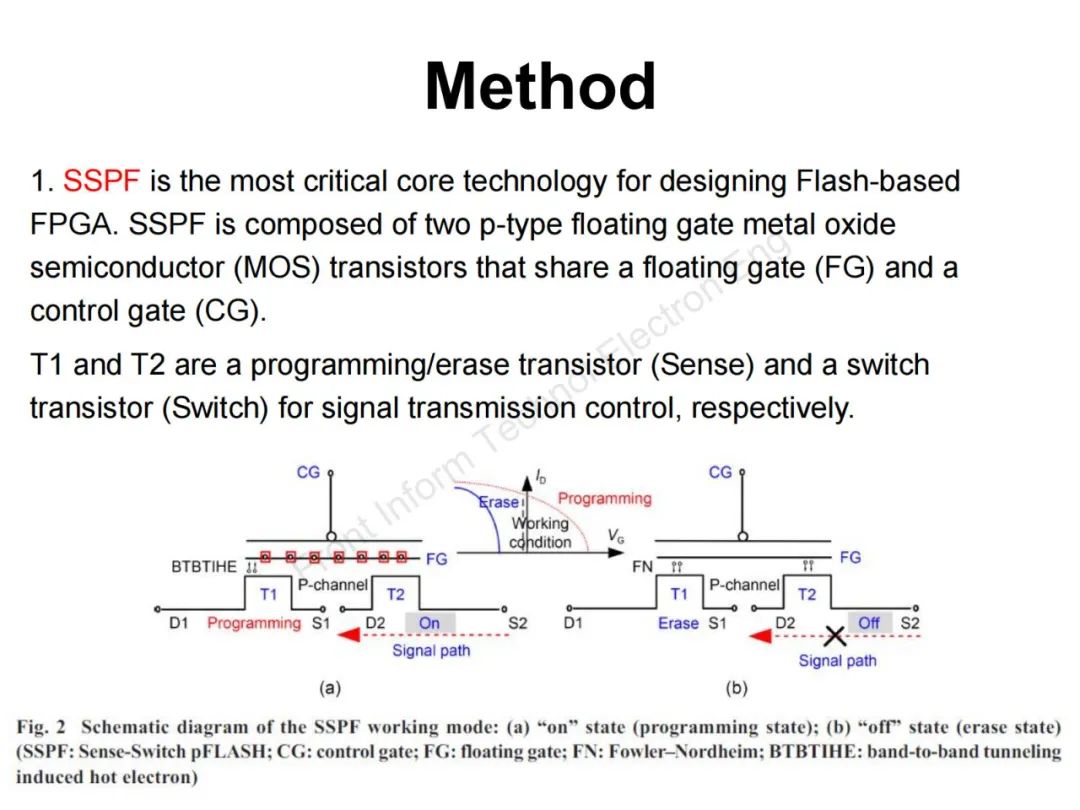

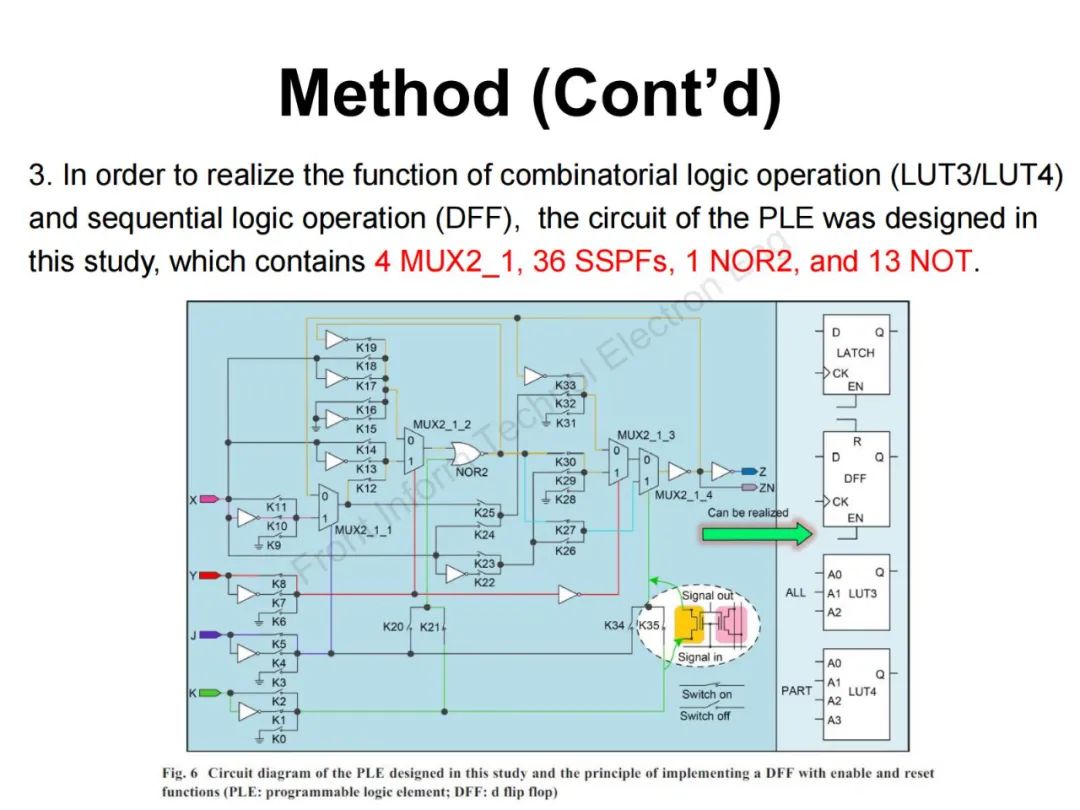

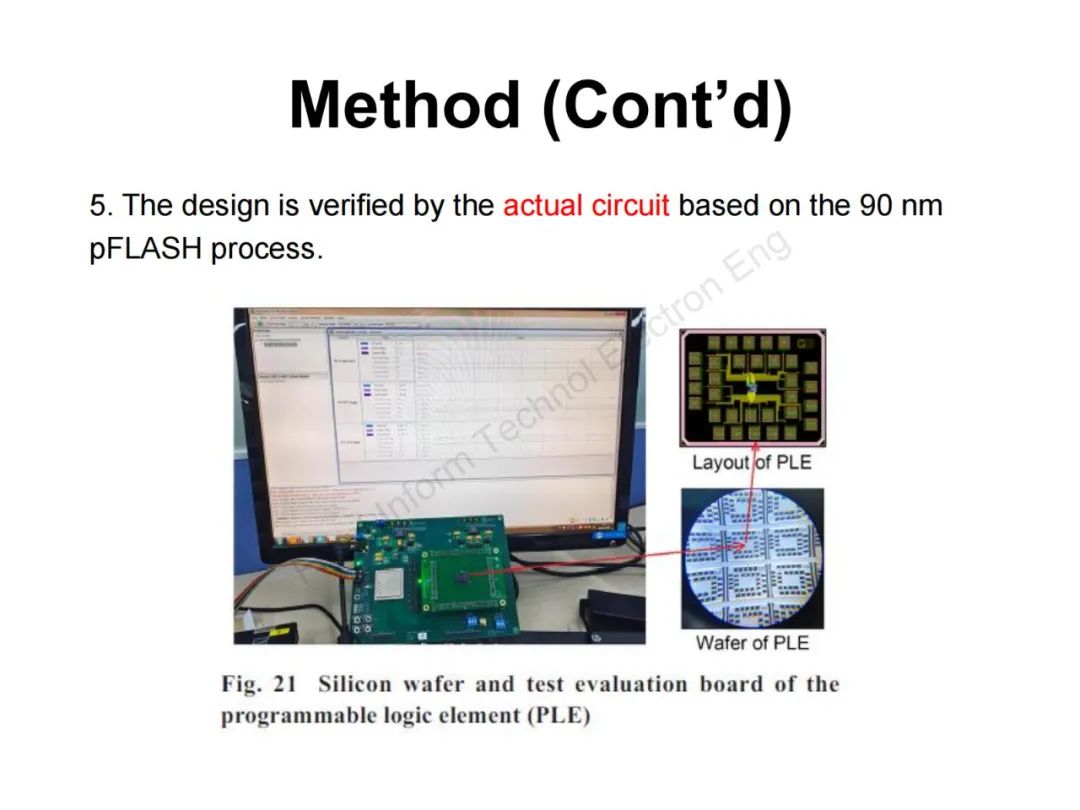
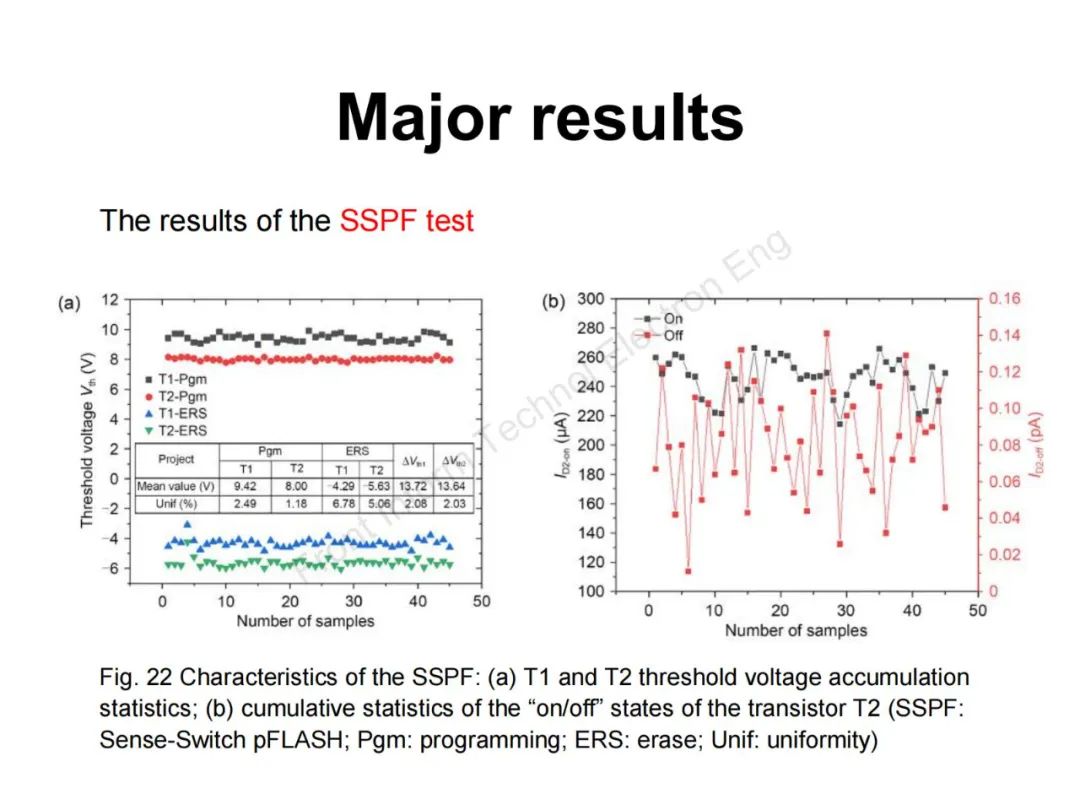
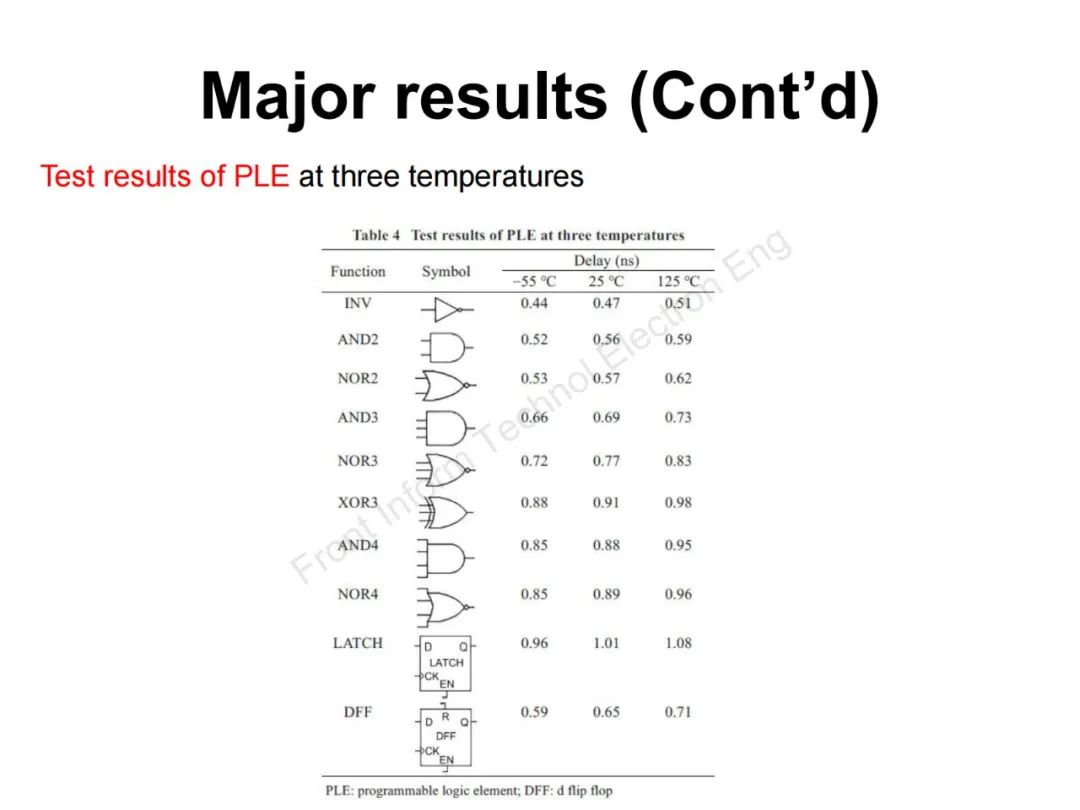
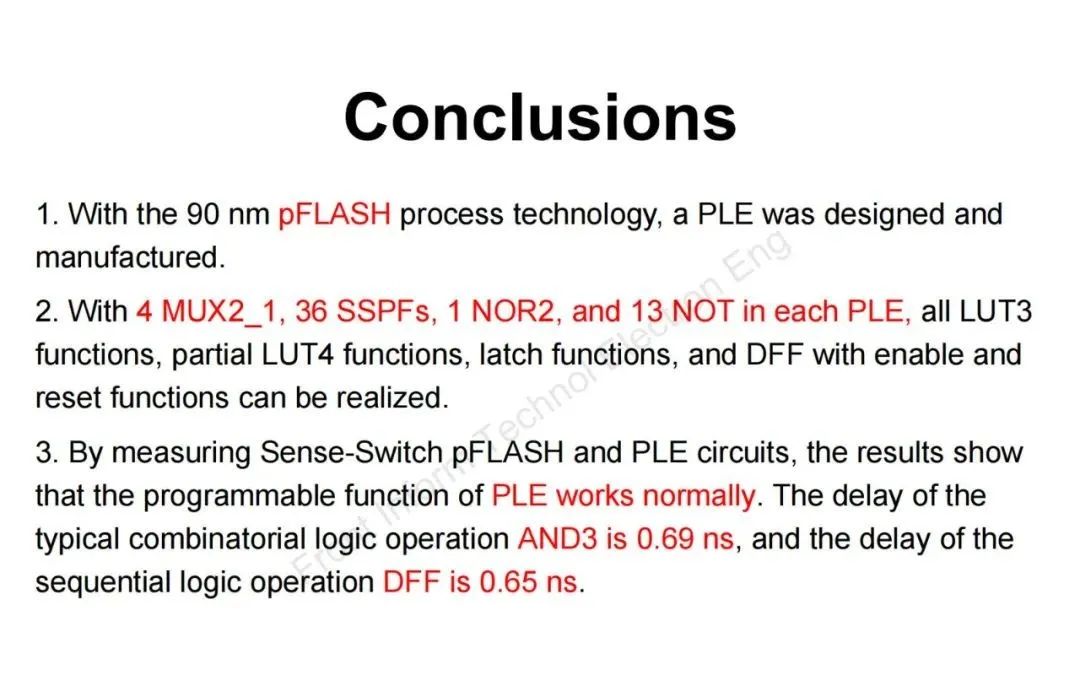
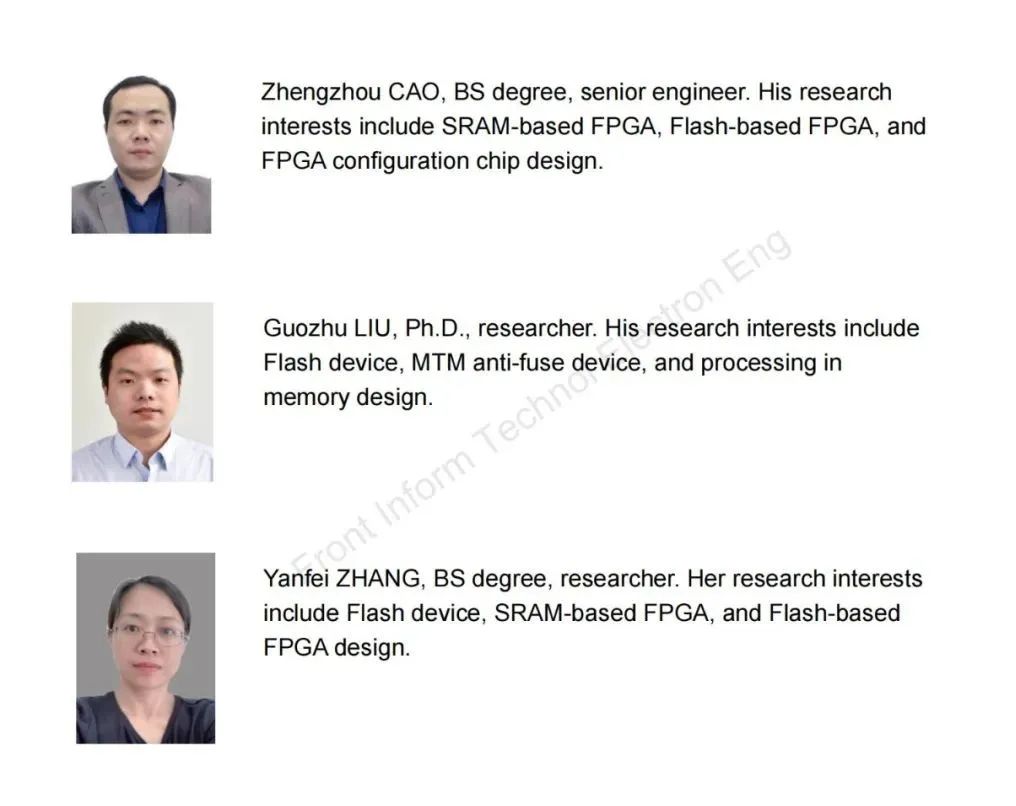
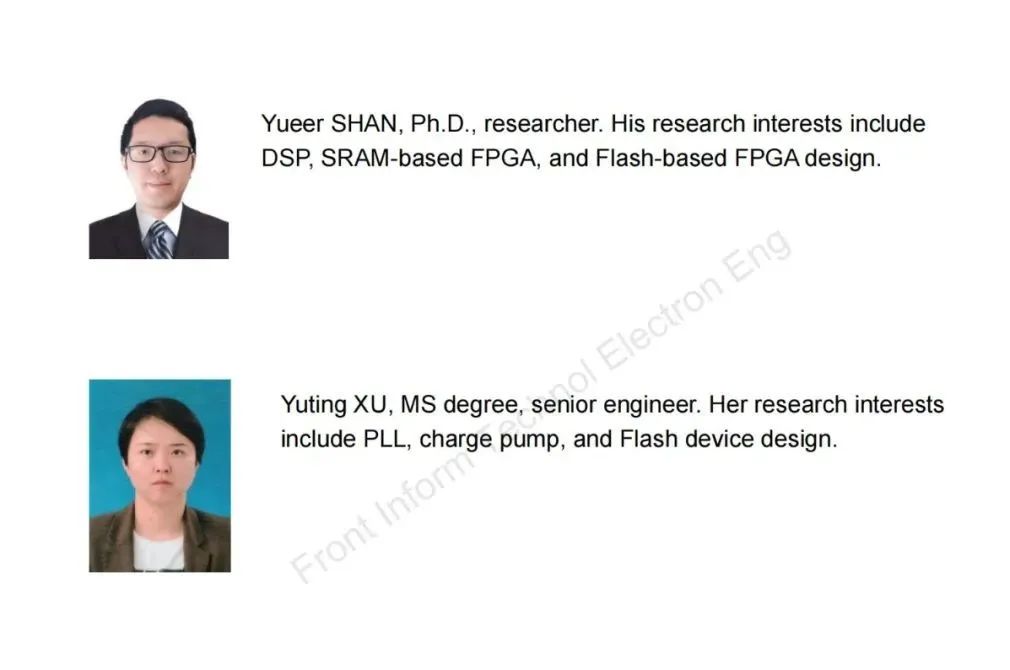
Scan the QR code below to read the full article:
1. Academician Pan Yunhe | On Visual Knowledge
2. Academician Pan Yunhe | Five Fundamental Questions of Visual Knowledge
3. Academician Pan Yunhe | On Visual Understanding
4. Ma Yi, Shen Xiangyang et al. | On the Principles of Simplicity and Coherence in the Origin of Intelligence
5. Academician Duan Baoyan | Introduction to the Evolution and Innovation of 5G and 6G Antenna System Technology in FITEE
6. Academician Zhang Ping, Professor Peng Mugeng et al. | Introduction to the Theory and Technology of Intelligent Simplified Wireless Networks in FITEE
7. Academician Wu Jiangxing’s Team | Discussion on New Paradigms of Inherent Security in 6G Networks
8. Yang Yi and Zhuang Yueting from Zhejiang University | Multiple Knowledge Representations under Big Data Artificial Intelligence: Framework, Applications, and Case Studies
9. Su Jinshu, Zhao Baokang et al. from National Defense University | Trends in Network Technology Development in Large-Scale Efficient Network Computing
10. Ye Peijun, Wang Feiyue et al. from the Institute of Automation, Chinese Academy of Sciences | Parallel Cognition: Hybrid Intelligence for Human-Machine Interaction and Management
11. Wang Feiyue, Zhang Jun from Wuhan University et al. | Knowledge Automation and Hybrid Enhanced Intelligence for Human-Machine Trust: Mechanisms and Applications for Complex Systems Cognition Control
12. Liu Zhiming from Southwest University, Wang Ji from National Defense University | Human-Machine-Object Integration System: Concepts, Challenges, and Research Opportunities
13. Hu Jinwen et al. from Northwestern Polytechnical University | Research on Obstacle Detection of Intelligent Vehicles in Outdoor Environments Based on Multi-Sensor Fusion
14. Zhang Jianhua et al. from Beijing University of Posts and Telecommunications | Channel Measurement and Modeling for 6G: Current Status and Prospects
15. Wang Haonan, Li Dongsheng et al. from National Defense University | Overview of Deep Reinforcement Learning
16. Niu Zhongqian, Zhang Bo et al. from University of Electronic Science and Technology | Mechanical Reliability Study of 3-dB Branch Waveguide Directional Couplers in the Submillimeter and Terahertz Bands
17. Lu Jianquan et al. from Southeast University | Binary Asynchronous Pulse Tracking Consensus in Multi-Agent Systems
18. Da Kai from National Defense University, Li Tiancheng et al. from Northwestern Polytechnical University | Research Progress on Multi-Sensor Multi-Target Tracking Based on Random Finite Sets
19. Xie Ying, Ma Jun et al. from Lanzhou University of Technology | Phase Synchronization and Energy Balance between Neurons
20. Zhang Kaiqing et al. from University of Illinois | Progress in Decentralized Multi-Agent Reinforcement Learning with Networked Agents
21. Branislav Rehak et al. | Leader-Follower Synchronization in Multi-Agent Systems with Heterogeneous Delays
22. Xiao Renbin et al. from Huazhong University of Science and Technology | Role Division Firefly Algorithm for Complex Optimization Scheduling
23. Wen Guanghui et al. from Southeast University | Research Progress on Distributed Economic Dispatch in Smart Grids: A Review
24. Bu Mingxuan, Pi Xiaodong et al. from Zhejiang University | Neuromorphic Synaptic Devices Based on Semiconductor Nanocrystals
25. Yu Junzhi et al. from Peking University | Visual Detection Algorithm for Underwater Garbage Cleaning Robots Based on Improved YOLOv4
26. Zhou Jie, Zhang Junping et al. from Fudan University | ChatGPT: Potential, Prospects, and Limitations
27. Zhang Ping, Xu Xiaodong, Dong Chen, Niu Kai et al. from Beijing University of Posts and Telecommunications | Modulated Multiple Access Technology for Semantic Communication
28. Xu Chi, Yu Haibin et al. from Shenyang Institute of Automation, Chinese Academy of Sciences | Industrial Wireless Network Edge Collaboration Resource Allocation Based on Multi-Agent Deep Reinforcement Learning
29. Wang Yuying, Li Jindong et al. from the China Academy of Space Technology | Progress in Space Applications of Mid-Long Wave Infrared Detection Technology
Latest Impact Factor 3.0, Q2 Area, Comprehensive Journal in Information Electronics | Call for Papers for FITEE!
Chinese Association for Science and Technology released the “Directory of High-Quality Scientific Journals”, FITEE included in the T1 directory in the field of Information Communication!
The first youth academic frontier forum in the field of information and electronic engineering was successfully held, led by Academician Duan Baoyan
Latest impact factor for 2021 announced FITEE surpasses 2.0 for the first time
FITEE’s impact factor increased by 55%, first entry into Q2 area
FITEE announces the list of first outstanding papers/topics and distinguished editorial board/communication experts!
FITEE editor-in-chief and editorial board article list (2019.1~2021.8)
FITEE communication expert article list (2019.1~2021.8)
Focusing on advanced integrated circuit technology and industrial innovation, the 5th “Frontier Forum in Information and Electronic Engineering” successfully held!
The Chinese Academy of Engineering released 10+10 global engineering frontiers in the field of information electronics
FITEE WeChat launches new features, no need to download PDF, view Chinese and English abstracts and full texts of each issue
Frontiers of Information Technology & Electronic Engineering (abbreviated as FITEE, ISSN 2095-9184, CN 33-1389/TP) is a comprehensive English academic monthly journal in the field of information electronics, indexed by SCI-E and EI,
Latest impact factor 3.0, located in JCR Q2 area. It originated from the “Journal of Zhejiang University, English Edition C: Computer and Electronics” founded in 2010, renamed in 2015, and is now a sub-journal of the Academy of Engineering of China in the field of information and electronic engineering. It covers fields such as computer, information and communication, control, electronics, and optics. Article types include research papers, reviews, personal viewpoints, and commentaries. The current editor-in-chief is Academician Pan Yunhe and Fei Aiguo of the Chinese Academy of Engineering. The journal implements an international peer review system, and initial feedback is generally received within 2-3 months. Once accepted, articles will be published online quickly.
In 2019, it was funded by the “Excellence Action Plan for Chinese Scientific Journals” launched by the Chinese Association for Science and Technology and six ministries (Tiered Journals). From 2021 to 2022, it successively entered the high-quality scientific journal grading directory in the field of information communication (organized by the China Communication Society) and computing (organized by the China Computer Society), both listed as the highest T1 level; included in the recommended directory of international academic conferences and journals by the China Computer Society -2022 (cross-sectional/comprehensive/emerging).
Official Website: http://www.fitee.zjujournals.com
Journal Springer Homepage:
http://www.springer.com/computer/journal/11714
Submission: http://www.editorialmanager.com/zusc
Postal Code: 32-324
Address: 148 Tianmushan Road, Xihu District, Hangzhou, Zhejiang Province, China
Phone: +86-571-88273162
Email: [email protected]
To facilitate communication and discussion among researchers, we have established the following academic WeChat groups. Users who need to join the group, please add the editor’s personal WeChat ID fitee_xb and leave a message stating your institution and the group you wish to join; the editor will add you to the group. Marketing personnel please do not disturb.
|
Computer Science and Technology Group
|
Optical Engineering and Technology Group
|
|
Control Science and Technology Group
|
Information and Communication Group
|
|
Electronics Discussion Group
|
Artificial Intelligence Group 1
|
















